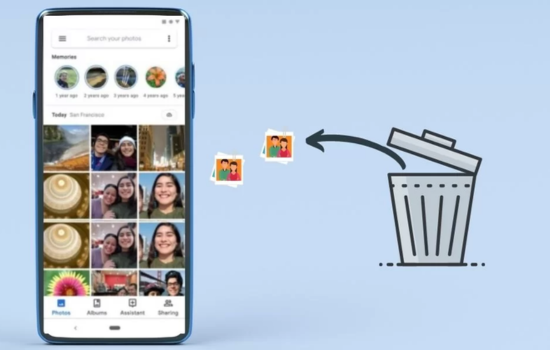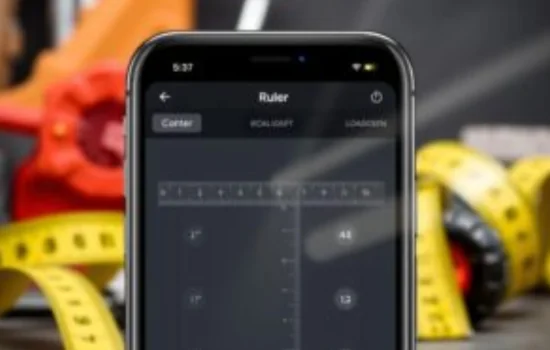Advertisements
Memories have the power to transport us to precious moments, rekindling emotions and stories that are part of our journey. However, modern life, with its constant digitalization and accelerated flow of information, often takes care of erasing these memories abruptly and unexpectedly.
Whether it's accidentally deleted photos, unexpected phone failures, device damage, or even the total loss of a device, these incidents can cause feelings of frustration and, in some cases, leave deep emotional scars.
However, it is important to remember that all is not lost. Fortunately, today’s technology offers a number of innovative and effective solutions that can help recover those precious memories that seemed lost forever.
Therefore, this guide's main objective is to provide complete and detailed content, making the image recovery process not only possible, but also simple and accessible for anyone.
In addition to presenting the main features of each application available on the market, this material will also cover practical tips and efficient strategies to maximize the chances of success in recovering lost photos.
After all, the way the device is handled immediately after the images are deleted can be a determining factor in the success of restoring the files. Therefore, understanding how these applications work and adopting best practices can be the first essential step towards reliving unforgettable moments and giving new life to memories that seemed irretrievably lost.
Advertisements
See also
- Savings Program: Young people earn R$1,000 to study!
- Uncover your roots with these apps!
- Reveal your secret admirers now with these apps!
- Watch anime wherever you want: must-have apps!
- Watch your favorite movies for free!
By the end of the reading, we hope that each person will be able to choose the tool that best suits their needs and be ready to embark on a nostalgic journey of recovery. Rediscovering these memories can be a rewarding and transformative experience, bringing back smiles, emotions and stories that deserve to be revisited.
Why Are Photos So Important?
Photographs undoubtedly have the incredible power to capture unique moments and immortalize them. Furthermore, they allow us to relive experiences, recall emotions and rescue details that could otherwise be easily forgotten over time. After all, each image tells a valuable story, whether it be a memorable birthday, an unforgettable trip or even a simple, ordinary day that, when revisited, becomes something special and full of meaning.
When we lose a photo, whether by accident or due to device failure, the feeling of loss can be intense. The memories they hold are often irreplaceable. Therefore, recovering deleted photos is not just a matter of technology, but rather a quest to reconnect with moments that shaped our lives.
Types of Photo Recovery Apps
There are many photo recovery apps available, each with its own specific methods. They fall into two main categories: those that work directly on mobile devices and those that work on computers. Each option has its advantages and limitations, and the best choice will depend on how the photos were deleted.
Importance of Making Backups
While recovery apps are a valuable tool, prevention remains the best strategy.
Backing up your photos regularly can help prevent the pain of loss and make recovery unnecessary. There are several ways to back up your photos, including cloud storage services like Google Drive and Dropbox, which allow users to save their images online. These services not only protect your photos from accidental loss, but also make it easy to access them from anywhere.
Another option is to store photos on physical devices, such as external hard drives or USB flash drives. This approach is particularly useful for those who prefer to keep their files offline.
Advertisements
The Best Photo Recovery Apps
Now that we have discussed the different types of apps and how recovery works, it is time to explore some of the best apps available for photo recovery.
DiskDigger
DiskDigger is one of the most popular photo recovery apps, especially for Android. It allows users to scan internal and external storage for deleted files. The free version offers basic functionality, while the Pro version expands the options, allowing you to recover files of different formats.
DiskDigger’s interface is intuitive, making it easy to use even for those with no data recovery experience. After the scan, users can preview recoverable photos before restoring them, which is a valuable feature to ensure they are recovering the correct images.
EaseUS MobiSaver
EasyUS MobiSaver is a popular option for those looking for a comprehensive solution. It is compatible with both Android and iOS, offering the ability to recover not only photos but also videos, contacts, and messages. The app is easy to use and features a user-friendly interface, ideal for users of all ages.
The free version has limitations, but the paid version unlocks additional features like bulk recovery and technical support. EaseUS MobiSaver stands out for its effectiveness and reliability, making it a solid choice for those looking to recover their lost memories.
Recoil
Recuva is a data recovery software for Windows computers that is widely recognized for its effectiveness. It offers a portable version that can be run from a USB flash drive, which is useful for users who need a quick and convenient solution. Recuva's interface is simple and intuitive, allowing even beginners to perform recovery without any difficulty.
One of the coolest features of Recuva is the option to perform a deep scan, which can find files that were deleted a long time ago.
This is especially useful for those trying to recover photos that were lost months or even years ago. Recuva also provides a preview of recoverable images, allowing users to choose what they want to restore.

Additional Tips to Maximize Photo Recovery
Recovering deleted photos can be successful, but there are a few tips that can help maximize your chances of success.
Once you realize that you've deleted important photos, stop using your device immediately. The more you use it, the greater the chance that new data will be written to the space where the photos were stored. This can make recovery difficult or even impossible.




